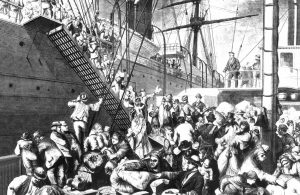The 1950’s were the most influential decade in American history because the civil rights Act began, fashion was completely new and trendy, there was much advancement in entertainment and medicine, and suburban life was much more “functional” than any other decade in American history.

In the 1950s, the expanding use of the mechanical cotton picker pushed another wave of black agricultural workers out of the South. Between 1940 and 1960, Chicago’s black population grew from 278,000 to 813,000.
Black Chicagoans in need of housing found little relief in the suburban housing market. With a few notable exceptions such as Aurora, Evanston, Oak Park, and Waukegan, blacks generally constituted less than 3 percent of the population in Chicago’s northern and western suburbs by the end of the twentieth century.
They found greater success in moving to southern suburbs, including Chicago Heights, Riverdale, and Harvey, where they migrated in large numbers in the 1950s and 1960s. These communities notably suffered from the decline of local industries in the final third of the twentieth century. On September 22, 1950, Ralph J. Bunche won the Nobel Peace Prize for his work as a mediator in Palestine.
Announced by the USTA, Althea Gibson’s appearance at the 1950 U.S. Championships was ranked the No. 1 moment in black tennis history. Gibson broke the color barrier when she entered the U.S. Championships in 1950, becoming the first African-American to be allowed to enter — forever changing the sport.
Perhaps one of the things which most characterizes the 1950’s was the strong element of conservatism and anticommunist feeling which ran throughout much of society. One of the best indicators of the conservative frame of mind was the addition of the phrase “under God” to the Pledge of Allegiance. Religion was seen as an indicator of anti-communism. Fifties clothing was conservative.
French fashion designers such as Dior, Chanel and Givenchy were popular and copied in America. Families worked together, played together and vacationed together at family themed entertainment areas like national parks and the new Disneyland. Gender roles were strongly held, girls played with Barbie dolls and Dale Evans gear, boys with Roy Rogers and Davy Crockett paraphernalia.
Drive-in movies became popular for families and teens. Cars were seen as an indicator of prosperity and coolness. Highways were built to take people quickly from one place to another, by-passing small towns and helping to create central marketing areas or shopping malls such as Sharpstown Mall, Gulfgate Mall and Meyerland Plaza in Houston.
racial discrimination 1950s, what happened in the 1950s in America, 1950s American culture, 1950s culture and society, 1950s timeline, 1950s economy, 1950s history, African American culture 1950s
